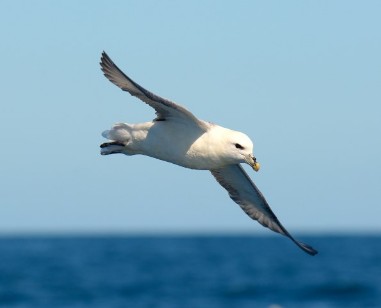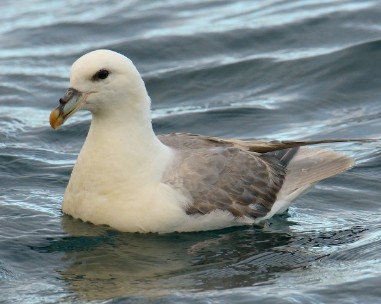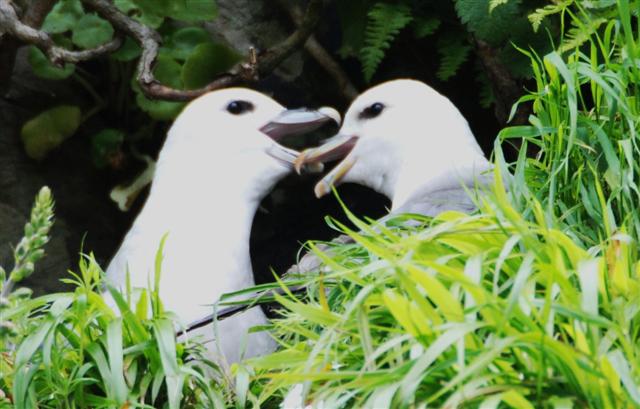Fulmar in Decline
Reports


Gliding very low over the open sea or along cliff tops on straight wings, the Fulmar used to be a familiar species around the coast of Arran. Superficially gull like, it has a “tube nose” and is more closely related to albatrosses. On many of the cliffs around the coast of Arran there used to be many small breeding colonies.
In the Arran Bird Report the First 40 Years, Fulmar is one of the species reported to be in serious decline. In the 1987 report, 284 pairs were reported and in 1992 approximately 150 pairs were present on the breeding cliffs around the island. Ten years later numbers were a fraction of these and in 2017 the highest total count was less than fifty birds about a 90% reduction in just over thirty years!
Fulmar is a long-lived species with some individuals living for more than forty years. They normally start breeding at around ten to twelve years old.
Many Fulmars return during the day to their breeding cliffs as early as November and most birds have claimed their nesting ledge by January. A single egg is laid in early to mid May. Males and females share the long incubation of around fifty days, taking it in turns of around five days. Chicks hatch in late June but it takes almost another fifty days before they are fledged and depart the cliffs in late August or September.
Fulmar chicks have at least one adult with them for the first ten to fifteen days after hatching. After that both parents forage for food leaving the chick alone. Although with this technique, the chicks can grow rapidly, they are vulnerable to mammal predators like rats and that may be a problem on Arran.
In 2020, Arran had a small number of occupied colonies with a small number of birds but there were no reports of fledged young from any of these colonies. This has been the case for most of the last ten years.
This decline is not confined to Arran. There may be multiple reasons for the decline around Scotland including changes in commercial fishing and increasing amounts of plastic in the sea. To investigate the latter, the Scottish government has an on-going study in which Marine Scotland is supporting the monitoring of plastic particles in Fulmars stomachs. There is more information here. It contains detailed advice on what to do if you find the body of a dead Fulmar on the shore. The investigating staff at Marine Scotland would be delighted to hear from you.
